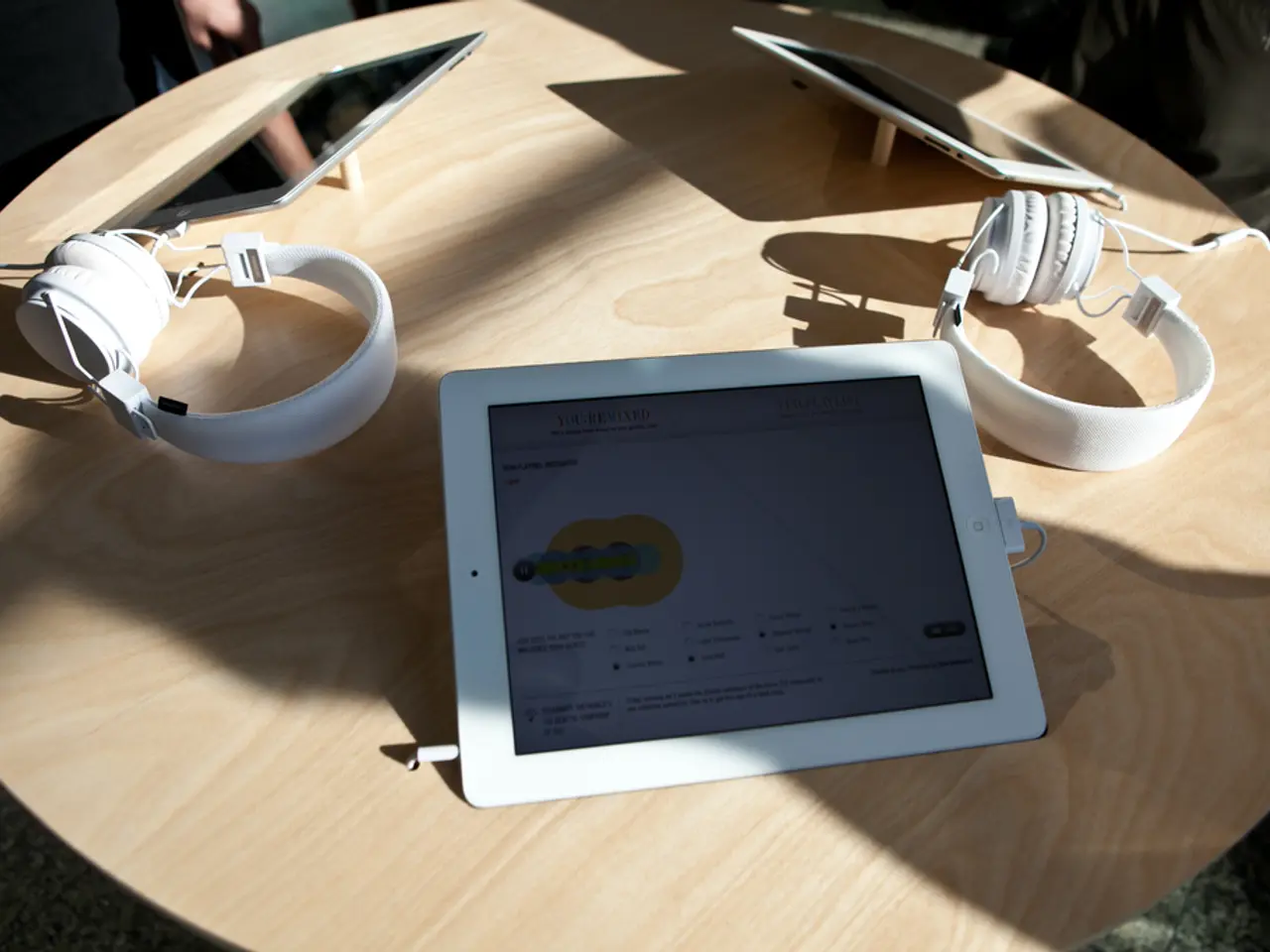Tech Giants Partner: Apple Collaborates with Synchron for Mind-Controlled iPhone and iPad Operation
Apple and Synchron Collaborate on Groundbreaking Brain-Controlled Technology
Apple Inc. is teaming up with neurotechnology firm Synchron to develop innovative brain-controlled technologies for iPhones and iPads. This collaboration aims to significantly enhance accessibility for individuals with physical disabilities by enabling thought-controlled operation of Apple devices, such as iPads and iPhones, without requiring physical movement.
The integration of Apple's assistive technology with Synchron's Stentrode device offers a practical, user-friendly, and direct brain-to-device interface. This is made possible through a combination of the Stentrode brain-computer interface (BCI), which reads neural signals related to motor intent from a blood vessel near the brain's motor cortex, and Apple's new BCI Human Interface Device (HID) protocol, which allows native, seamless communication between the implant and the Apple ecosystem.
Key aspects of this integration include:
- Non-invasive implantation: The Stentrode device is implanted via a minimally invasive catheter procedure through the jugular vein, avoiding open-brain surgery, making it safer and more practical for accessibility use compared to other BCIs.
- Signal decoding and control: The electrode array on the Stentrode captures brain signals associated with movement intention, which are wirelessly transmitted to an external decoder. Advanced artificial intelligence and machine learning models decode these signals in real-time into digital commands, allowing users to perform actions like navigating the Home Screen, launching apps, composing text, and controlling the device entirely by thought.
- Integration with Apple’s Switch Control accessibility feature: This feature normally accepts inputs from touch, switches, or voice; integrated with the Stentrode, the iPad treats thought signals as standard input commands. This makes the brain signals effectively replace finger taps, clicks, or swipes.
- Closed-loop feedback and improved accuracy: Apple’s system provides on-screen context dynamically back to the BCI, helping to improve navigation and responsiveness. The system also includes a signal strength meter that helps users fine-tune their mental focus and control without external assistance, enhancing the user experience and independence.
- FDA-approved trials and early user impact: The technology is currently being tested in FDA-authorized clinical studies with participants (notably people with ALS). Early users, such as a participant named Mark, have demonstrated the ability to interact with iPads by thought alone, enabling messaging, reading news, and staying connected, thus restoring communication and digital independence to people who lost motor function.
This breakthrough offers people with severe physical disabilities a promising new way to interact with digital devices, vastly improving accessibility and independence. The external processor translates the neural signals into commands for electronic devices, while the Stentrode device is described as a minimally invasive and scalable BCI. This collaboration between Apple and Synchron is set to revolutionise the way individuals with physical disabilities control their Apple devices.
[1] Apple Inc. (2021). Apple and Synchron partner to develop brain-controlled technologies for iPhones and iPads. [online] Available at: https://www.apple.com/newsroom/2021/02/apple-and-synchron-partner-to-develop-brain-controlled-technologies-for-iphones-and-ipads/
[2] Synchron (2021). Stentrode: A Minimally Invasive and Scalable Brain-Computer Interface. [online] Available at: https://synchroninc.com/stentrode/
[3] Apple Inc. (2020). Switch Control. [online] Available at: https://www.apple.com/accessibility/switch-control/
[4] Synchron (2021). Stentrode Clinical Trials. [online] Available at: https://synchroninc.com/stentrode/clinical-trials/
[5] Synchron (2021). Mark's Story. [online] Available at: https://synchroninc.com/stentrode/mark/
- This collaboration between Apple Inc. and Synchron may revolutionize health-and-wellness technology, as it aims to improve the lives of individuals with physical disabilities through thought-controlled operation of their smartphones, smart-home devices, and even medical-conditions management apps.
- The integration of Synchron's Stentrode device and Apple's technology is expected to lead to advancements in artificial-intelligence and neurological-disorders research, as the technology may help in understanding and treating various neurological conditions.
- With the integration of Synchron's Stentrode and Apple's Switch Control accessibility feature, users will be able to navigate various health-and-wellness apps, read news publications from digital magazines, and communicate with others about their medical-conditions using only their thoughts.
- The development of this brain-controlled technology is set to redefine technology's role in the lives of people with physical disabilities, enabling them to maintain control of their digital lives and stay connected despite their medical conditions, thanks to the integration of smartphones, gadgets, and smart-home devices.
- As the clinical trials for the Stentrode device progress, individuals with severe physical disabilities such as ALS may find relief and improved independence through the use of this breakthrough technology, which has already demonstrated success in enabling thought-controlled operation of digital devices, restoring connection and digital independence to those who have lost motor function.




